|
Making eating utensils in the field
Carving wooden spoons
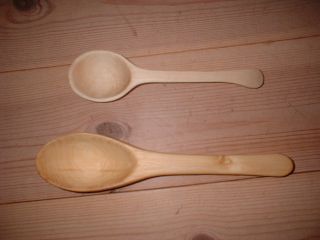
A spoon could be carved out in the field. Preferably use birch or aspen. These woods will not make your food taste anything else than it was supposed to.
The wood should be dry to prevent splitting, but Iíve used fresh wood with success. And after all one could always make a new one if the one you have is broken.
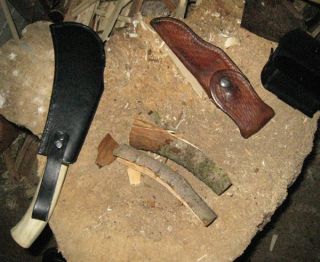
Find a suitable piece of wood. A branch with a slight bend is OK. Split it, and begin shaping it with your axe or a suitable knife.
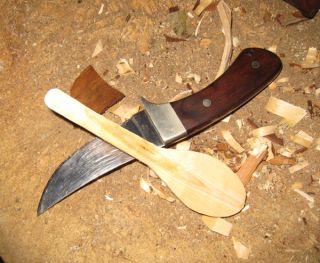
A spoon knife or gouge is used to hollow out the spoon blade (I actually carry one of those with me on some trips).
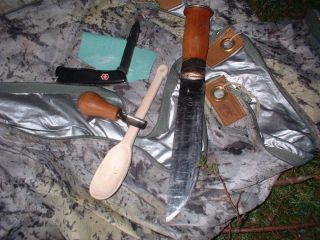
If you donít have a spoon knife or gouge you could burn the bowl out with a piece of hot coal. Begin in the middle of the bowl. Gently blow on the coal to make it burn the wood of the spoon. Blowing air trough a blow pipe of some sort (stem of a sorrel or a straw) will give better control over the burning. Scrape the charred wood out of the bowl as you go.
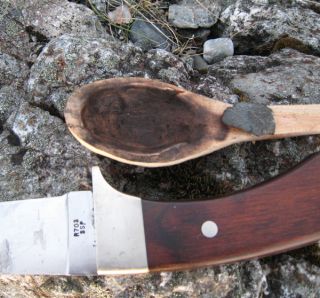
Be patient, don`t rush it. Too much heat can cause the spoon to crack. The spoon above was carved out in about 15 minutes and the bowl is the result of another 15 minutes of burning.
That said I seldom bother to make spoons in the woods. I prefer the chop sticks for ease.
Chop sticks
Any stick of proper length could be used to stir the soup and two small sticks, about 20 centimetres long, could be used as chop sticks to eat your food. You could lay some work in it and create fancy art pieces or just make two crude working sticks as I usually do.
Making chop sticks is the easiest way to make eating utensils in the woods. The procedure takes only a few minutes. You cut two twigs and get rid of their bark. When you are done with them just toss them in the fire.
Picture below show you how to hold the chop sticks.
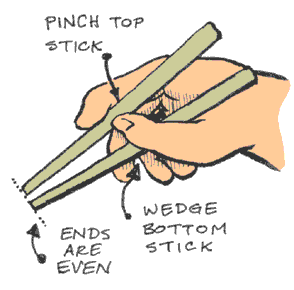
Wire fork
A crude fork could be made from steel or copper wire.
Even in pretty remote areas it is possibel to come over old fencing wire or old telephone lines (thick copper).
A piece of wire about 30cm long is doubled and the ends twined to form the forks handle. When about 3cm is left the two remaining ends are posisioned and sharpened on a rock or with the file on your Leatherman.
|